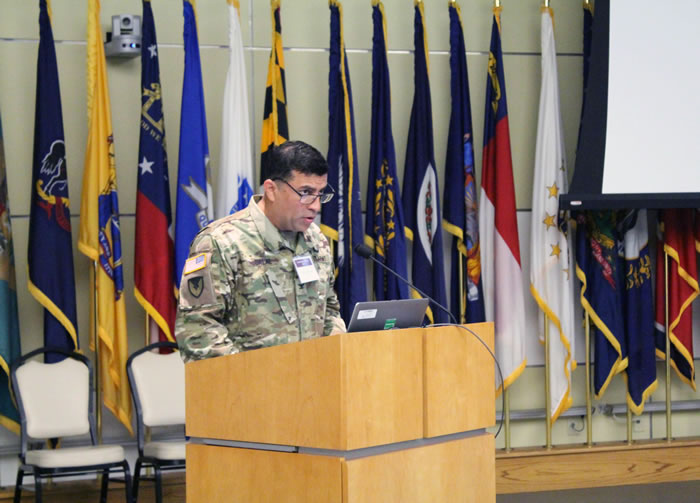DHP and CDMRP Host 2018 Neurological Disease Review and Analysis Meeting

The Defense Health Program and Congressionally Directed Medical Research Programs hosted the annual Neurological Diseases Review and Analysis meeting at Fort Detrick, Sept. 17.
The meeting is an annual opportunity to review the current status of DHP research within 11 programs, which include the investigation of Parkinson's disease, lupus, Alzheimer's disease, epilepsy, amyotrophic lateral sclerosis, Gulf War illness, multiple sclerosis, tuberous sclerosis complex, neurofibromatosis, autism, and Duchenne muscular dystrophy.
Dr. Kelley Brix, chief of interagency research coordination for the Defense Health Agency, was the senior coordinator and panel member for the meeting.
CDMRP program managers took this opportunity to discuss the programs in depth, including scopes of the problems, funding histories, investment strategies, strategic goals, program challenges, solutions, successes, and program highlights.
Each of the 11 programs have very specific goals that are tailored to each program's mission and strategic plan, but the underlying focus shared by all was the desire to improve the health outcomes and health readiness for our Service Members, Veterans, and the American public.
Rear Adm. Mary Riggs, deputy commander for the U.S. Army Medical Research and Materiel Command, provided the meeting's opening remarks, and she thanked everyone for their time and dedication to medical research.
"Thank you for putting together all of these presentations," Riggs said. "I thank you very much for all that you do and for what you do for our Warfighters and for military medicine."
A common theme found in each of the presentations included CDMRP partnerships with the National Institutes of Health, Department of Veterans Affairs, the U.S. Food and Drug Administration, contracting, the Office of Human Protections, and other intramural and extramural partnerships.
Col. Stephen Dalal, CDMRP director, commented on how this research effort is a "team sport," and that CDMRP relies on others in order to execute the mission.
At the conclusion of the presentations, Dalal provided specific examples of major accomplishments from each of the 11 programs, including several treatments that have advanced into clinical trials. He also highlighted four consortia which leverage funds, share data and develop standardization across the clinical field, which will hopefully lead to the standardization of outcomes.
"In some of these diseases there is not a lot of program funding or commercial interest, but it is nice to see how we pull our resources and tackle this through research consortia," Dalal explained.
"I take my hat off to the program managers and science officers," he continued. "There's a considerable amount of coordination that goes into managing these efforts. At the end of the day, it's thanks to their diligence, making sure there is a return on investment and that we are making a difference for the patients."














